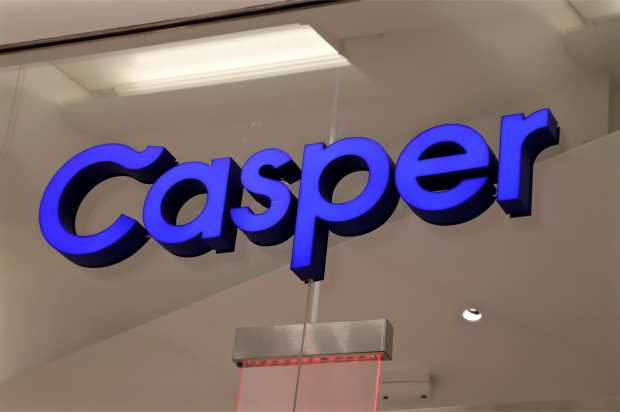Why Casper’s IPO May Join Ghosts Of Unicorns Past — Or Never To Be

For Casper Sleep, a billion dollar valuation amid an initial public offering (IPO) — and with it, vaunted “unicorn” status in the public markets — may never have had a ghost of a chance.
A filing with the Securities and Exchange Commission (SEC) Monday (Jan. 27) said the mattress and bedroom access-focused firm does not expect to keep the valuation that had been attached to the company during previous funding rounds by venture capitalists.
As has been reported, the company said it plans to price shares at $17 to $19, and that would give a “midpoint” valuation of roughly $705 million. At the high end the valuation would be $744 million, as there would be 39.2 million shares outstanding after the offering, according to the SEC filing.
The last time the company raised money, in 2019, the valuation was $1.1 billion.
Digging into the filing from this week, the company, which ships mattresses and other items directly to consumers, said the proceeds — with 8.35 million shares offered, and bringing in between about $142 million to $159 million — would be used to fund growth.
The filing shows that for the year that ended in December 2018, sales of $357.9 million were up 42 percent as measured against 2017. Losses grew by 26 percent to $92 million in that same period.
And though it is only partial data, through the first nine months of 2019, Casper Sleep posted what appears to be slowing growth, a bit below 21 percent to $312 million. In the meantime, net loss of $67 million was up 4.7 percent in that same (stub) period. Looking ahead, the firm states that full year revenues should be about $437 million to $441 million, which would be a midpoint of 23 percent, which we note is still a marked deceleration, while losses could be as much as a company-projected $91 million to $96 million.
On the surface, it may be simple enough to say that investors are wary of money-losing eCommerce firms, and that Casper’s own pricing range reflects that wariness.
The company has been branching into bedroom-focused items that include sheets, pillows and other items. And Casper also has been opening physical locations too, with 60 retail stores to date and 18 retail partners. The S-1, with a nod toward product innovation, also mentions the research and development facility operated by the company and the Glow Light, which is “designed to synchronize with the body’s circadian rhythm.”
And in terms of broader market view, the company cites figures estimating that the “global sleep economy” is worth about $432 billion, with the U.S. at $79 billion of that tally. The overall market is growing at 6.4 percent, according to the filing.
Drilling down a bit, Casper Sleep has said that from the firm’s beginning to September of 2019, more than 16 percent of customers who have purchased at least once through the direct sales channel have returned to purchase another product — despite the fact that the replacement cycle of many of the items offered by the company is longer than the length of time Casper has been in business.
Roughly 14 percent of customers have been repeat customers within the first year of their original purchases. Average order value has been on the upswing, from $437 in 2017 to $720 in 2018 to $820 through the first nine months of 2019.
These are decent metrics, pointing in the right direction. But then again, an eCommerce retail model that has a mid-teens repeat customer rate has to work that much harder (relatively speaking) to attract new customers to its wares. The model of selling mattresses that can cost from several hundred dollars to more than $1,300 each may be sorely tested in a recession, where if (and it’s an if) the consumer reins in spending, the old mattress may well stay in place for another year, or longer. In addition, eCommerce though it may be and omnichannel though the company wants to be, Casper gets 70 percent of its production volume from two manufacturers, which indicates that should industry dynamics change (or prices increase), Casper could be pressured.
In the drive to capitalize on the “sleep economy,” Casper Sleep reminds us of at least one other firm that has taken claim to changing the way things have always been done and which had a rough time when it came to IPOs … WeWork, which cast its lot in with physical goods (office space), and red ink.
The nod toward a reduced valuation even before coming to market may speak to more rationalized expectations in the post-WeWork world, where dreams of unicorn status solely on the promise of market disruption are … flights of fancy.
